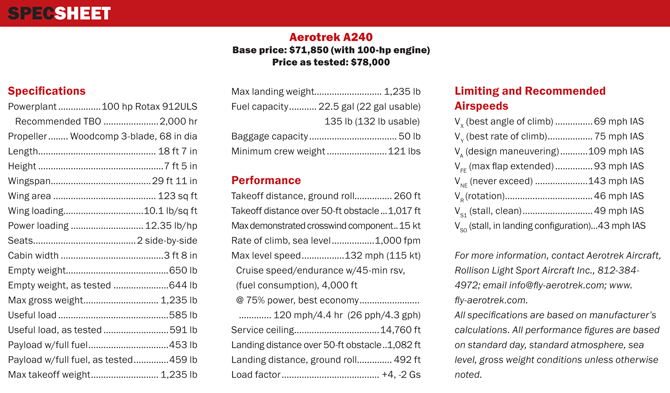Photography by Chris Rose
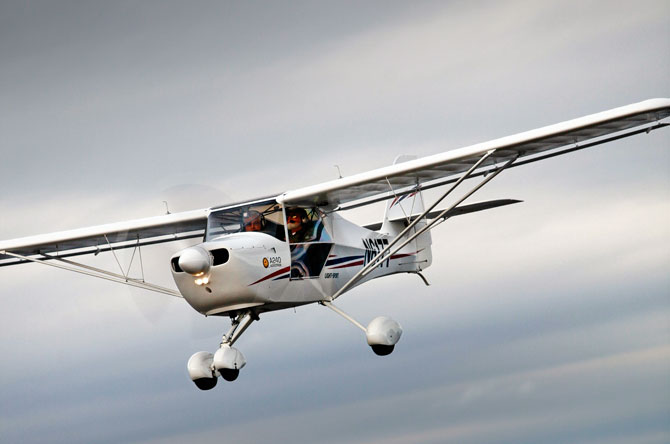
Many of you have expressed your frustration that the $60,000 light sport aircraft you expected back in 2004 when the LSA movement was approved have not materialized. Today most of the models are more like $130,000 and even $180,000. Here’s an aircraft with a price tag about as close as you’ll come to previous expectations. Out the door, a fully equipped Aerotrek from Aeropro in the Czech Republic with a 100-horsepower Rotax engine and a GPS moving map is $78,000. (Zlin Aviation claims a similar price for its Savage, a tailwheel LSA Cub lookalike.)
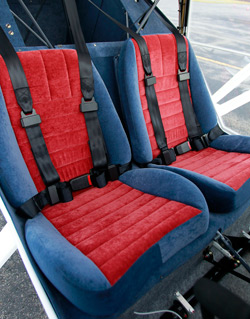 The seats are based on automotive design. The seat cushions and inserts are attached by Velcro straps.
The seats are based on automotive design. The seat cushions and inserts are attached by Velcro straps.
One of the ways Aerotrek U.S. distributor Rob Rollison keeps the price down is by eliminating dealers. “That would add $15,000 to the price,” Rollison said from his home and Aerotrek service center in Bloomfield, Indiana. Instead of dealers, he has customers who are friends of the company. They display their aircraft at trade shows or, like a customer in Seattle, give demonstrations to potential buyers.
One of those is Bob Sullivan of Pittsfield, Massachusetts, who agreed to let me fly his prized possession, an A240. There are 60 Aerotrek A220s (tailwheel model) and A240s (nosewheel model) flying in the United States, and 350 in the world. Outside the United States they are referred to as EuroFox A220s and A240s (“A” for Aeropro). The tailwheel version accounts for half the sales in the United States.
Sullivan, a locksmith and retired computer technician for an aerospace company, chose the nosewheel model that proved itself to be a “real” airplane during a test flight in windy conditions. It has a maximum gross weight of 1,235 pounds, 85 pounds short of the FAA-specified LSA maximum limit of 1,320 pounds. (Seaplanes in the Light Sport category are allowed to weigh slightly more.)
Aeropro imposed the weight limitation so that the aircraft could comfortably meet ASTM stall speed requirements (a maximum of 51 mph) for Light Sport aircraft. The Aerotrek stalls at 43 mph indicated airspeed with flaps down and 49 mph with flaps retracted.
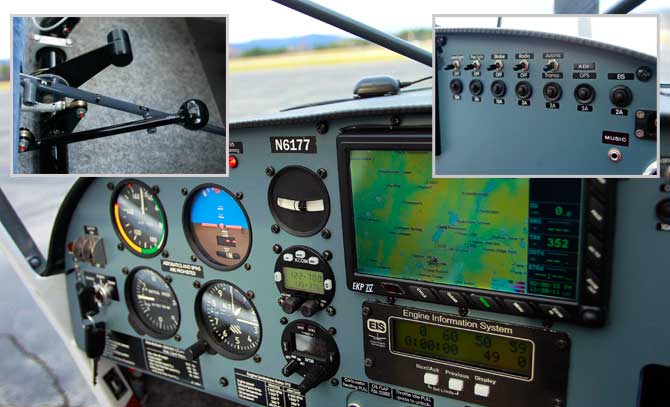
Trim and flap levers (left inset) are easy to reach. The trim is the shorter lever, while the longer flap lever moves through its full range without detents. Pilots are taught to move to half flaps and stop before moving to full flaps. The word “brake” is seen at the bottom of the panel. A red lever on the panel operates both main wheel brakes at the same time.
The proof
Winds of 10 to 12 knots whipped the windsock through a 100-degree arc at Pittsfield Municipal Airport in hilly northwestern Massachusetts as I descended to Runway 26. A front was on its way carrying the first dose of winter. Sullivan, a sport pilot who once flew powered parachutes, had called as soon as I got to the hotel late in the afternoon at nearby Lenox, Massachusetts, suggesting we fly immediately to avoid winds in the next day’s forecast. The well-written Aerotrek pilot’s operating handbook (POH) shows limitations of a 15-knot crosswind and a six-knot tailwind.
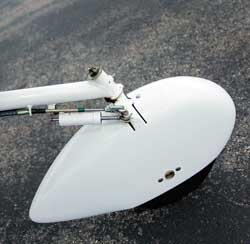 The aircraft has nosewheel steering, a favorite of many pilots.
The aircraft has nosewheel steering, a favorite of many pilots.
I kept the airspeed at the POH recommendation of 65 to 70 mph on short final, lowering the left wing into the wind to stop from drifting away from the centerline. I had full flaps. The Aerotrek uses flaperons—flaps that are mounted the full span of the wing but with a gap between the wing and the flaps. When it’s time to turn, one flap raises while the other lowers. I hadn’t noticed any difference between flaperons and ailerons earlier in the flight while performing stalls and slow flight. Stalls were nonevents, although I had read a previous report that the aircraft “breaks sharply.” I didn’t experience that.
On short final winds were whipping from a crosswind to a slight tailwind and back again, yet the Aerotrek easily tracked the centerline in a slip with little difficulty. Sullivan routinely approaches in a forward slip just to stay sharp on the maneuver in case it is ever needed. We were loaded within 15 pounds of maximum gross weight, including my Coca-Cola-fed 235 pounds. (Sullivan’s aircraft has an empty weight of only 644 pounds.)
The power
Sullivan’s aircraft was most impressive during takeoff, climbing at 1,000 feet per minute as advertised with both of us aboard. He routinely sees much higher climb rates without heavy AOPA Pilot editors aboard.
He prefers to cruise at about 70 percent power, giving him a steady 120 mph true airspeed, but sipping fuel at a burn of about 4.2 gallons per hour. With 22 gallons of fuel aboard, he can cruise longer than his bladder will allow. He uses automobile gasoline in the aircraft, which happens to be the preferred fuel for Rotax engines. It can also use 100LL fuel.
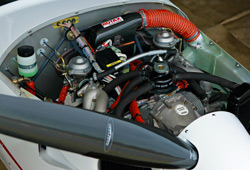 Nearly all customers favor the 100-horsepower Rotax engine, rather than the 80-horsepower option.
Nearly all customers favor the 100-horsepower Rotax engine, rather than the 80-horsepower option.
While he could fold the wings and keep his airplane in one of the special trailers that Aerotrek offers for $8,200 minus winch, he prefers to keep it in a hangar; he never folds the wings. While it is easily done by one person, the factory claims, he prefers to leave the aircraft the way the service center assembled it. Because it is mostly fabric-covered, it needs to be in either a hangar or a trailer to keep it shielded from ultraviolet light. The engine cowling, wing leading edges, flaperons, and landing gear are Fiberglas.
The pros (and cons)
The pros are obvious. You can fly an LSA aircraft on a valid driver’s license if you have never been refused an FAA medical certificate, the purchase price is low, and operating costs are low, especially for Sullivan, who attended factory-authorized training schools that allow him to do the maximum amount of owner maintenance possible.
All light sport aircraft require some thought as to how to enter the cabin, usually with separate strategies for the butt and each leg, but the Aeropro took less thought than many. (A graceful entry to LSAs is not an option.) There was plenty of cabin height to allow even the tallest person to wear a headset and not bang against the cabin sunroof.
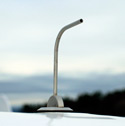 A forward-facing tube serves as a vent for the fuel tank. The design, coupled with a tight-fitting fuel cap, keeps the fuel in the wing when the wings are folded.
A forward-facing tube serves as a vent for the fuel tank. The design, coupled with a tight-fitting fuel cap, keeps the fuel in the wing when the wings are folded.
The seats are as comfortable as car seats, although I didn’t test them with a multi-hour flight.
Sullivan had to ponder overnight to come up with anything about the airplane that he doesn’t like. He is on his second Aerotrek, and when a newer model comes out with enough new bells and whistles, he just might trade in the current one for another. I noticed every rivet holding the polycarbonate sunroof to the chromoly steel-tube fuselage had a touch of silicone on the center. Asked about it, Sullivan said each rivet has a hole in the center. When passing through a light rain shower, he noticed water channeling to the flat-card compass and filling its innards through a tiny hole in the top of the compass. Stopping up the rivet holes with silicone solved the problem.
Brakes are operated by a pull handle on the panel next to the cabin heat knob. Since we had cabin heat on, I noticed the heat control interfered with my grasping the brake knob.
A forward-facing tube (top right) serves as a vent for the fuel tank. The design, coupled with a tight-fitting fuel cap, keeps the fuel in the wing when the wings are folded. The aircraft has nosewheel steering (center), a favorite of many pilots. Nearly all customers favor the 100-horsepower Rotax engine (below), rather than the 80-horsepower option.
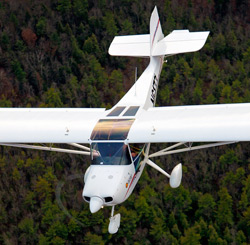 The airplane has great visibility in all directions. Here, the aircraft is flown in formation by looking through the skylight. Behind the cabin roof are two more windows that are easily removed so the wings can be folded, although owner Bob Sullivan prefers not to. He likes to keep the aircraft the way it was when it came from the factory.
The airplane has great visibility in all directions. Here, the aircraft is flown in formation by looking through the skylight. Behind the cabin roof are two more windows that are easily removed so the wings can be folded, although owner Bob Sullivan prefers not to. He likes to keep the aircraft the way it was when it came from the factory.
The panel
The aircraft comes with standard instrumentation including a Grand Rapids Technologies Engine Instrument System 4000 that provides outside air temperature and an hour meter. An option is the Dynon SkyView synthetic vision system for $11,190.
In addition, he has an Xcom Avionics radio with a built-in intercom and a Decker transponder. The Decker transponder costs $2,685, while the Xcom, no longer available as an option, cost $1,865 (in 2010). The AvMap DKP 4 GPS was a $1,499 option, and he added a $600 XM weather attachment. The TruTrak ADI (with GPS) is $1,340, but he opted not to get the model that also includes an autopilot. (That ADI is no longer offered by TruTrak and has been replaced with a new Gemini model that has airspeed and altitude ribbons, an autopilot option, and can switch screens to display engine management data—all in a space no bigger than an analog attitude indicator.) Additional items provided as standard equipment include an American King ELT, the Czech-built Woodcomp propeller, wing strobe and nav lights, a slip and skid ball, the vertical speed indicator, and the airspeed indicator. A BRS ballistic parachute recovery system is available for $5,495.
The past
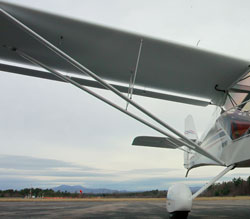 Flaperons are flaps that are mounted to the full span of the wing.
Flaperons are flaps that are mounted to the full span of the wing.
The company was started by four friends, Jozef Lobb, Jan Ivancik, Miroslav Kopecky, and Peter Toncek, living in the Slovakia portion of Czechoslovakia. While Czechoslovakia was still behind the Iron Curtain they were allowed to fly only radio-controlled airplanes. Months after the fall of communism, the four pooled modest resources and started the company. When Czechoslovakia split into two states, Slovakia and the Czech Republic, the Slovakian friends decided to headquarter Aeropro in the Czech Republic, now 60 miles from their home, to take advantage of a better government aviation agency, but they continue to build the aircraft in Slovakia.
The four used the basic design of the Avid Flyer, refined it, and marketed it as the EuroFox. With all those refinements, Rollison thought it best to rename the aircraft the Aerotrek for United States sales to separate it from the first EuroFox model. It’s known as Aeropro in Europe.
The company logo for Aerotrek is a blue heron, such as the one Rollison often sees outside his Indiana home. To show it trekking, he added hiking boots to its feet, and the Aerotrek name was born. Doors can be removed for flight, if you want to feel like a bird yourself.
Email the author at [email protected].
